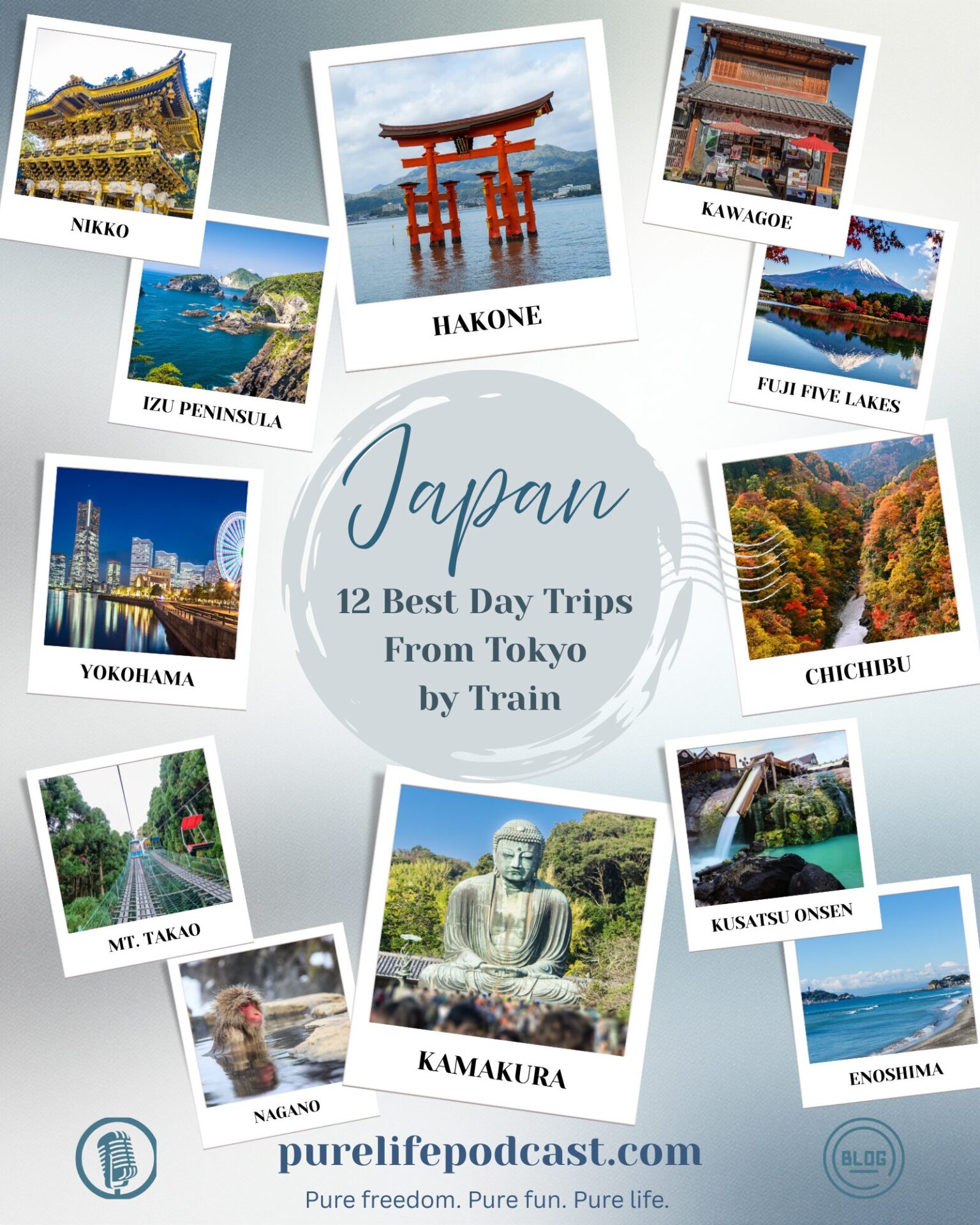12 Best Day Trips from Tokyo by Train FAQ: Smart-Luxe Traveler Edition
Q: How should I plan multiple day trips?
Cluster by direction (South = Kamakura/Enoshima/Yokohama; West = Hakone/Fuji; North = Nikko/Chichibu). Reserve trains on Omio and private transfers with Welcome Pickups.
Q: Is a Japan Rail Pass worth it?
If you’re taking multiple long-distance Shinkansen rides within a week, yes—it can save you hundreds. For local day trips, individual tickets or regional passes are more efficient.
Q: Can I do Kyoto in a day?
Possible ( Nozomi Shinkansen ≈ 2 h 30 m ), but we suggest an overnight stay. See The Perfect 2-Day Kyoto Itinerary.
Q: When do trains run?
5 AM – midnight typically; confirm final departures in NAVITIME or JR apps.
Q: What should we pack?
Light shoes, folding umbrella, layer, cash, portable Wi-Fi / eSIM, handkerchief.
Q: When is the best time of year to visit Japan?
Spring & Fall for comfort and color; Winter for Fuji clarity and onsen bliss.
Q: Can Japanese facilities accommodate a family of five?
Absolutely — book consecutive Shinkansen seats (Omio), suite rooms (Booking.com), and family onsen (kazoku-buro).
Q: How can we elevate our Japan travels and experiences further?
Reserve Michelin meals, spa days at Toyosu Manyo Club, and VIP afternoon tea at The Peninsula Tokyo.
For Even More Inspiration:
